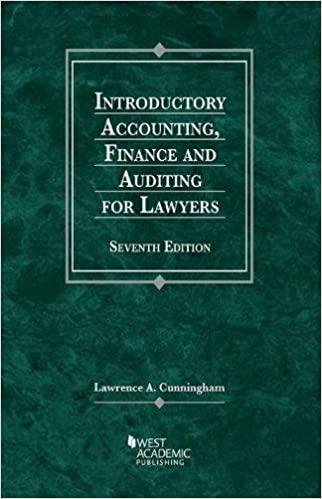Question
Kitchen Supply, Inc. (KSI), manufactures three types of flatware: institutional, standard, and silver. It applies all indirect costs according to a predetermined rate based on
Kitchen Supply, Inc. (KSI), manufactures three types of flatware: institutional, standard, and silver. It applies all indirect costs according to a predetermined rate based on direct labor-hours. A consultant recently suggested that the company switch to an activity-based costing system and prepared the following cost estimates for year 2 for the recommended cost drivers.
| Activity | Recommended Cost Driver | Estimated Cost | Estimated Cost Driver Activity | ||||
| Processing orders | Number of orders | $ | 41,125 | 175 | orders | ||
| Setting up production | Number of production runs | 228,000 | 120 | runs | |||
| Handling materials | Pounds of materials used | 275,000 | 110,000 | pounds | |||
| Machine depreciation and maintenance | Machine-hours | 210,000 | 10,000 | hours | |||
| Performing quality control | Number of inspections | 61,200 | 45 | inspections | |||
| Packing | Number of units | 88,000 | 440,000 | units | |||
| Total estimated cost | $ | 903,325 | |||||
In addition, management estimated 7,100 direct labor-hours for year 2.
Assume that the following cost driver volumes occurred in January, year 2:
| Institutional | Standard | Silver | |||||||
| Number of units produced | 56,000 | 28,000 | 10,000 | ||||||
| Direct materials costs | $ | 42,000 | $ | 25,000 | $ | 14,000 | |||
| Direct labor-hours | 410 | 490 | 580 | ||||||
| Number of orders | 13 | 8 | 6 | ||||||
| Number of production runs | 3 | 4 | 7 | ||||||
| Pounds of material | 12,000 | 5,000 | 2,700 | ||||||
| Machine-hours | 550 | 120 | 90 | ||||||
| Number of inspections | 2 | 3 | 3 | ||||||
| Units shipped | 56,000 | 28,000 | 10,000 | ||||||
Actual labor costs were $14 per hour.
Required:
a.
(1) Compute a predetermined overhead rate for year 2 for each cost driver using the estimated costs and estimated cost driver units prepared by the consultant. (Round your answers to 2 decimal places.)
| Activity | Rate | |
| Processing orders | per order | |
| Setting up production | Per run | |
| Handling materials | per pound | |
| Using machines | per machine hour | |
| Performing quality control | per inspection | |
| Packing | per unit |
(2) Compute a predetermined rate for year 2 using direct labor-hours as the allocation base. (Round your answer to 2 decimal places.)
| Predetermined rate per direct labor hour |
b. Compute the production costs for each product for January using direct labor-hours as the allocation base and the predetermined rate computed in requirement a(2). (Do not round intermediate calculations.)
| Account | Instiutional | standard | Silver | Total |
| Direct Material | $ 42000 | 25000 | 14000 | 81000 |
| Direct Labor | ||||
| Indirect Costs | ||||
| Total cost |
c. Compute the production costs for each product for January using the cost drivers recommended by the consultant and the predetermined rates computed in requirement a. (Note: Do not assume that total overhead applied to products in January will be the same for activity-based costing as it was for the labor-hour-based allocation.) (Do not round intermediate calculations.)
| Account | Institutional | Standard | Silver | Total |
| Direct materials | $ 42000 | 25000 | 14000 | 81000 |
| Direct labor | ||||
| Indirect costs | ||||
| Processing orders | ||||
| Setting up production | ||||
| Handling materials | ||||
| Using machines | ||||
| Performing quality control | ||||
| Packing | ||||
| Total cost |
Step by Step Solution
There are 3 Steps involved in it
Step: 1

Get Instant Access to Expert-Tailored Solutions
See step-by-step solutions with expert insights and AI powered tools for academic success
Step: 2

Step: 3

Ace Your Homework with AI
Get the answers you need in no time with our AI-driven, step-by-step assistance
Get Started


